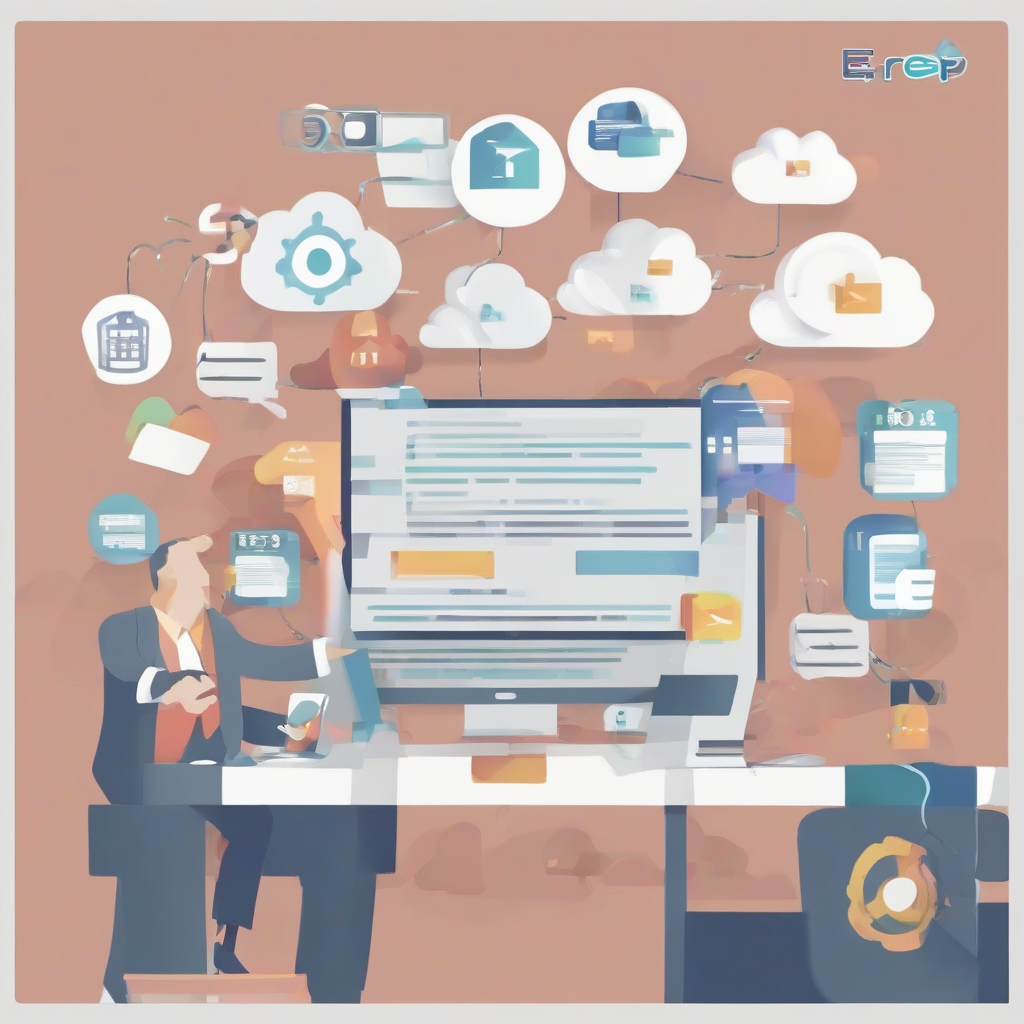ERP: A Comprehensive Guide to Understanding Enterprise Resource Planning

What Does ERP Mean? A Comprehensive Guide to Understanding Enterprise Resource Planning
In the bustling world of business, efficiency and integration are paramount. Enterprise Resource Planning (ERP) emerges as a powerful tool that aims to streamline and optimize various aspects of a company's operations. But what exactly does ERP mean, and how does it contribute to a company's success?
Understanding the Essence of ERP
At its core, ERP stands for Enterprise Resource Planning. It's a software solution designed to centralize and integrate different business processes, enabling organizations to manage and share data across various departments. This integration fosters a unified view of information, leading to improved decision-making, reduced errors, and enhanced overall operational efficiency.
Key Components of an ERP System
ERP systems are multifaceted and encompass a wide range of modules, each tailored to specific business functions. Here's a breakdown of some key components:
- Financial Management: Covers accounting, budgeting, financial reporting, and financial analysis.
- Human Resources (HR): Manages employee information, payroll, benefits, talent acquisition, and performance management.
- Supply Chain Management (SCM): Oversees the procurement, production, distribution, and inventory management processes.
- Customer Relationship Management (CRM): Focuses on customer interaction, sales, marketing, and service.
- Manufacturing: Manages production processes, quality control, and materials planning.
- Project Management: Facilitates project planning, execution, and tracking.
- Business Intelligence (BI): Provides data analysis and reporting tools for informed decision-making.
Benefits of Implementing an ERP System
The adoption of an ERP system can bring numerous benefits to an organization, including:
- Improved Efficiency: Streamlined processes and reduced manual tasks enhance overall efficiency.
- Enhanced Visibility and Transparency: A centralized database provides a holistic view of business operations.
- Better Collaboration: Improved communication and data sharing foster collaboration between departments.
- Real-time Insights: Access to real-time data allows for more informed decision-making.
- Cost Reduction: Reduced redundancies, improved inventory management, and optimized resource allocation lead to cost savings.
- Increased Agility: ERP systems enable organizations to adapt quickly to changing market conditions.
- Improved Customer Satisfaction: Better inventory management, improved delivery times, and enhanced customer service contribute to increased customer satisfaction.
Types of ERP Systems
ERP systems are not one-size-fits-all. They come in various forms, tailored to meet the specific needs of different industries and company sizes. Here are some key types:
- On-premises ERP: Software installed and managed on a company's own servers.
- Cloud-based ERP: Software hosted on a cloud provider's servers, accessible through the internet.
- Industry-specific ERP: Designed for specific industries, such as manufacturing, retail, or healthcare.
- Small and Medium Business (SMB) ERP: Designed for smaller companies with simpler needs.
- Enterprise ERP: Designed for large organizations with complex and diverse operations.
The ERP Implementation Process
Implementing an ERP system is a comprehensive process that requires careful planning and execution. It typically involves several stages:
- Needs Assessment: Identify the organization's specific business requirements and objectives.
- Selection of ERP Software: Evaluate and select the most suitable ERP system based on needs and budget.
- Customization and Configuration: Tailor the ERP system to the organization's specific workflows and processes.
- Data Migration: Transfer data from existing systems into the new ERP system.
- Testing and Training: Ensure the system functions correctly and train users on its functionalities.
- Go-Live: Launch the ERP system and transition to full operation.
- Post-implementation Support: Provide ongoing support, maintenance, and upgrades to ensure the system's effectiveness.
Challenges of Implementing ERP
While ERP offers numerous benefits, its implementation can also present challenges:
- Cost: ERP software and implementation services can be expensive.
- Complexity: ERP systems can be complex, requiring extensive training and adaptation.
- Data Migration: Migrating data from existing systems can be a challenging and time-consuming process.
- Resistance to Change: Employees may resist changes to their workflows and processes.
- Integration: Integrating the ERP system with other software applications can be complex.
Overcoming ERP Implementation Challenges
Despite the challenges, organizations can successfully implement ERP by taking steps to mitigate risks:
- Thorough Planning: Clearly define goals, identify stakeholders, and develop a comprehensive implementation plan.
- Effective Communication: Communicate the benefits of the ERP system and address employee concerns throughout the process.
- Proper Training: Provide adequate training to users to ensure they understand and can effectively use the system.
- Phased Implementation: Implement the ERP system in stages to reduce risks and allow for gradual adaptation.
- Experienced Partner: Engage a reputable ERP implementation partner with expertise in the industry.
The Future of ERP
The world of ERP is constantly evolving, with new technologies and advancements emerging. Here are some key trends shaping the future of ERP:
- Cloud Computing: Cloud-based ERP systems are becoming increasingly popular, offering scalability, flexibility, and cost savings.
- Artificial Intelligence (AI): AI is being integrated into ERP systems to automate tasks, enhance decision-making, and improve efficiency.
- Internet of Things (IoT): Connecting devices and sensors to ERP systems provides real-time insights and facilitates data-driven decision-making.
- Mobile Access: ERP systems are becoming more mobile-friendly, allowing users to access data and perform tasks on their smartphones or tablets.
- Focus on User Experience: ERP systems are becoming more user-friendly, with intuitive interfaces and streamlined workflows.
Conclusion
ERP is a powerful tool that can transform an organization's efficiency, visibility, and agility. While the implementation process presents challenges, a well-planned and executed strategy can lead to substantial benefits. By understanding the components, benefits, and future trends of ERP, businesses can make informed decisions about adopting this essential technology.
What's Your Reaction?

















